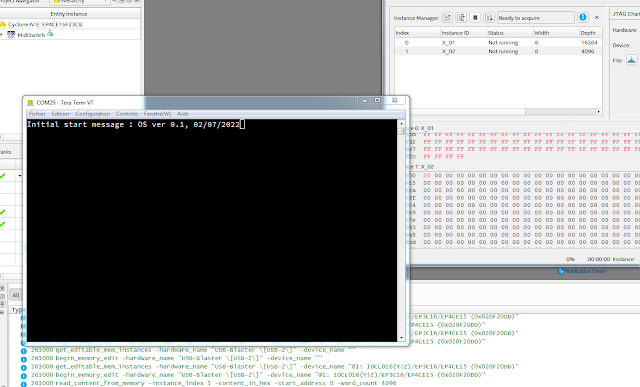Yes, well, at some point of your life, we have to close certain projects that have been in progress for... a very long time, such as having a ZX81 at home.
lundi 28 février 2022
What... A ZX81?
vendredi 18 février 2022
DRMULATOR : The circuit board is finally routed!
Given the relatively small size of the circuit, I thought it was going to be complicated to route all the tracks. Ultimately that was not the case.
Everything is not routed according to the rules of the art. That's not bad, it will allow me to put my finger on the potential problems more easily.
We just have to wait for the receipt of the printed circuit...
mercredi 16 février 2022
Drumulator : about sound generation.
Now that I know how to manage the samples using the micro-sequencer I created in VHDL, I have to study the analog part using a converter other than the original one.
The AM6072 circuit is obviously no longer available. It is therefore necessary to use a standard DAC instead of the original companding DAC. I will use a lookup table in the FPGA to modify the response of the new DAC.
In order not to launch myself right now in the realization of the Drumulator clone, I must test the sound generation of the eight channels using the new DAC. So I started to create a little test circuit board:
lundi 14 février 2022
DRUMULATOR & FPGA
Some time ago, I coded the whole processor part of the Drumulator in an FPGA. I still had to code the sound generation sequencer. I thought it was complicated to achieve, given the schematic in the service manual.
The sequencer looks like this:
I was not sure how to go about writing readable and simple code from these two diagrams. After having understood the general operation of this system, I finally decided to transcribe in VHDL what I had understood. Good idea since these two diagrams are coded in about fifteen short lines of code.
lundi 7 février 2022
A MIDI patch bay : first start
About a month ago, I talked about the development of a MIDI switch based on an FPGA. This system will include logic elements, as well as a processor to control everything. There are proprietary systems for developing software for embedded processors quite easily. As I decided to use independent solutions, I had to implement mechanisms to allow easy debugging. In particular, I installed an external ROM support on which I can insert a simple EPROM emulator :
This makes it much easier to load a new firmware version. It is no longer necessary to go through the heavy tools of the FPGA programming software. At system startup, the RESET procedure copies the contents of the external ROM inside the FPGA. Once this is done, the embedded processor may start and display its prompt message:
There you go, the system is finally ready to move on to the application development stage. There is still a lot of work to do before a real test of the system, but it's progressing well!
jeudi 3 février 2022
I quit my job!!!
January 2022 was a bit special for me. I left my job as a computer scientist in the administrative services of a French university. After 20 years spent with fools, I decided that it was high time to resume the course of a healthy life, at least on the psychological level.
And it doesn't matter if it's me who's crazy!









